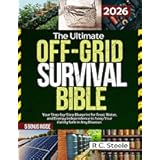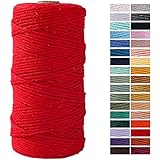Mastering Creative Recycling: Ingenious Upcycling Hacks for a Sustainable Lifestyle
There is an inherent satisfaction derived from the transformation of the mundane into the magnificent, or the discarded into the desired. Just recently, a colleague of mine was lamenting the sheer volume of perfectly functional items that are routinely jettisoned due to a minor defect or the perception of obsolescence. This discussion inadvertently led to the realization that a paradigm shift in our relationship with materials is not merely a philosophical exercise; it is a practical imperative, achievable through inventive recycling hacks.
The accompanying video provides a compelling visual demonstration of how everyday items can be granted a new lease on life, showcasing ingenious DIY crafts and methods of creative recycling. However, the implications extend far beyond simple craft projects; these approaches represent a micro-level application of circular economy principles, fostering a culture of resourcefulness. The transition from linear consumption to a more regenerative model is increasingly recognized as critical for environmental stewardship.
The Art of Repurposing: Elevating Everyday Materials Through Upcycling Projects
The practice of upcycling projects is not merely about extending an item’s utility; it is about enhancing its value, aesthetics, or functionality beyond its original design. This often involves a process of deconstruction and reconstruction, where the inherent properties of materials are reconsidered. Rather than seeing an item as ‘trash,’ it is viewed as a raw material for a novel creation, thereby reducing waste and conserving resources.
For instance, the transformation of a simple drinking straw into a cable management solution, as depicted in the video, illustrates a fundamental principle: identifying latent utility. While traditionally seen as a single-use item, a plastic straw’s flexibility and tubular structure can be strategically employed. The process, involving a pencil sharpener to create a continuous, flexible spiral, effectively converts a linear object into a helical binding agent. This not only organizes unsightly wires but also potentially prolongs the lifespan of electronic cables by reducing strain and tangling.
From Disposable to Durable: Innovative Approaches to Household Items
Consideration of material properties is paramount in effective recycling hacks. Glass bottles, for example, possess inherent durability and aesthetic appeal, often overlooked once their contents are consumed. The repurposing of an empty glass bottle as a soap dispenser, achieved by fitting it with a pump mechanism from a discarded plastic bottle, exemplifies intelligent material interchange. This act not only reduces plastic waste but also introduces a more visually appealing and stable dispenser into the domestic environment. Conversely, a lightweight plastic bottle, prone to being knocked over, often presents a functional challenge that is circumvented by the denser, more stable glass vessel.
Similarly, the ubiquitous cardboard Pringles can, designed for optimal snack preservation and portability, can be ingeniously transformed into an organized storage solution. The creation of a U-shaped aperture at its base converts a top-loading cylindrical container into a bottom-dispensing system for items like cotton swabs. This design modification improves accessibility and efficiency, ensuring that items are dispensed one-by-one, minimizing clutter and waste. This ingenious alteration re-frames the can’s industrial design, moving it from a temporary food package to a semi-permanent organizational tool, underscoring the versatility of composite paperboard structures.
Reimagining Waste: Unlocking Potential in Discarded Goods for Sustainable Living
The broader implications of creative recycling extend into the realm of sustainable living, where resourcefulness becomes a cornerstone of eco-conscious behavior. Items that might be deemed beyond repair or purpose are instead viewed as components for new constructions, embodying a design philosophy rooted in maximum utility. This perspective encourages a detailed examination of an object’s constituent parts and their potential for independent or collective reuse.
A broken umbrella, for instance, typically represents a regrettable discard. However, by understanding its modular construction—a fabric canopy attached to a skeletal frame—its potential for transformation becomes evident. Reattaching the fabric panels to the prongs, as demonstrated, creates a multi-panelled receptacle ideal for displaying flowers. This transformation highlights the capacity of even damaged goods to serve an aesthetic and functional purpose, provided a creative lens is applied. The umbrella, once a shield against the elements, becomes a vibrant display for natural beauty, showcasing an unexpected synergy between disparate forms.
Empowering Resourcefulness: Innovative Reuse and Material Transformation
The principle of innovative reuse is also powerfully demonstrated by the metamorphosis of a common plastic bottle into a functional piggy bank. A PET bottle, often destined for a recycling facility (or worse, landfill), can be reimagined as a durable savings vessel. By cutting and reassembling the bottle sections, a secure container is formed, and with the addition of a coin slot and decorative elements, it takes on the playful form of a pig. This project not only facilitates saving but also educates on the tangible value that can be extracted from discarded materials, fostering a sense of ownership over both financial and environmental resources. The transformation itself serves as a metaphor for the accumulation of value from seemingly valueless inputs.
Perhaps one of the most audacious examples of material transformation presented is the creation of bespoke sandals from plastic straws. This particular hack illustrates a sophisticated understanding of material properties and design principles. The process involves fusing multiple straws together using heat to create a pliable sheet, which is then cut and shaped to form a shoe sole and strap. This technique fundamentally alters the structural integrity of the straws, converting individual hollow cylinders into a coherent, flexible matrix. Such an approach showcases the potential for thermoplastics to be molded and repurposed in ways that directly address everyday needs, reducing reliance on new material production and simultaneously diverting plastic waste from environmental pathways. The ingenuity here is not merely in the craft, but in the micro-engineering of a new material composite from existing components.
Beyond the Obvious: Cultivating a Mindset of Waste Reduction and Eco-Friendly Solutions
These recycling hacks are more than just clever tricks; they are catalysts for a broader shift in perspective towards waste reduction and the adoption of eco-friendly solutions. The emphasis is placed on recognizing the inherent value in items before they are discarded, challenging the prevailing linear economic model where resources are extracted, used, and then disposed of. Instead, a more circular approach is championed, where products and materials are kept in use for as long as possible.
The implications for home organization are also profound. By thoughtfully repurposing containers and materials, dedicated storage solutions can be created for a fraction of the cost of purchasing new items. This not only declutters living spaces but also instills a sense of purpose in objects that might otherwise contribute to landfill. The organized environment that results is a direct byproduct of a thoughtful and sustainable approach to material management.
The Broader Impact: From Personal Crafting to Global Environmental Stewardship
While these examples are presented as individual craft ideas, their collective impact, if widely adopted, would be substantial. Each act of repurposing contributes to a reduction in demand for virgin materials, mitigates energy consumption associated with manufacturing, and lessens the burden on waste management systems. This micro-level action directly supports macro-level environmental goals, fostering a collective movement towards environmental stewardship.
The integration of such recycling hacks into daily life encourages a mindful consumption pattern, where the end-of-life of a product is considered at the point of purchase. It shifts the focus from disposability to durability and adaptability. This fundamental change in mindset is perhaps the most significant contribution of these inventive upcycling projects.
The array of creative recycling strategies highlighted here serves as a powerful reminder that significant steps towards sustainability often originate from seemingly simple acts of ingenuity. Each hack represents a microcosm of the larger imperative to reconsider our material flows and embrace a more circular economic paradigm, ultimately contributing to a healthier planet through dedicated recycling hacks.







